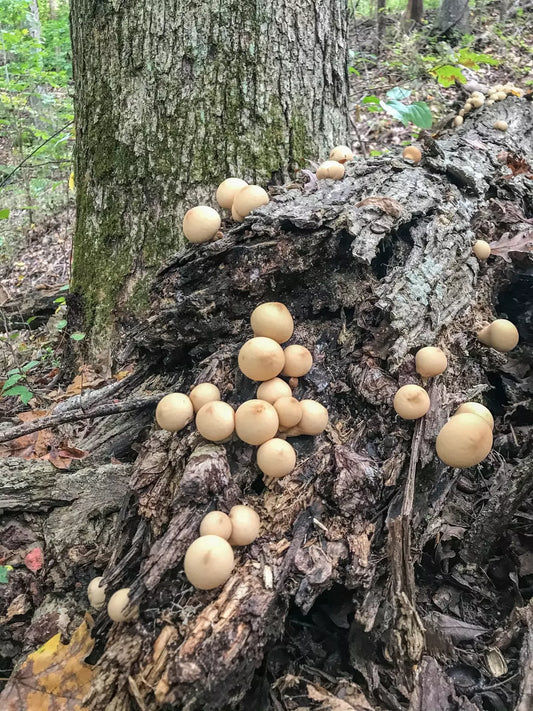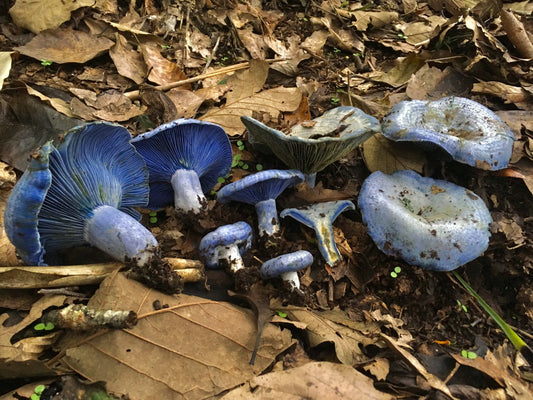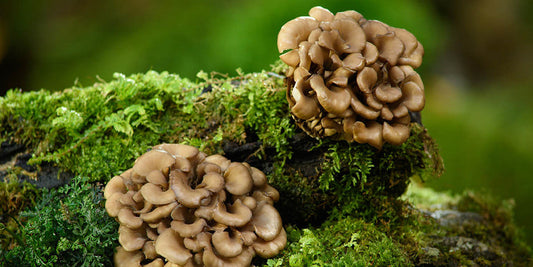Mushroom Info
Lions Mane
Enter the world of culinary delight with Hericium Erinaceus, commonly known as Lion's Mane—a delectable, shaggy-looking mushroom native to North America, Europe, and China. Flourishing in the vicinity of maple and beech trees, this fascinating fungus thrives as a saprophytic feeder on decaying trees. However, it unveils its versatile nature by also exhibiting endophytic tendencies, living as a parasitic gem on live trees.
Lion's Mane boasts a distinctive seafood-like taste, reminiscent of crab or lobster—making it a personal favorite for crafting mouthwatering "lobster" rolls. Its flavor profile is a harmonious blend of sweetness, richness, and a subtle savory undertone. What sets it apart is its meaty yet delicately stringy texture, making it an excellent choice for those seeking a delightful substitute for crab. Indulge your palate in the unique and flavorful experience that Lion's Mane brings to the table.
Oyster Mushroom
Step into the diverse and delectable realm of the Pleurotus, commonly known as the Oyster Mushroom family—a culinary delight widely savored across the globe. Beyond their exceptional taste, certain members of the Oyster Mushroom family have proven to be remarkable soil remediators. These fungi, with their mycoremediation prowess, contribute to the detoxification of soil contaminated with substances like petroleum and hydrocarbons.
Thriving in both tropical and temperate climates, Pleurotus fungi showcase their adaptability on a global scale. As saprotrophic organisms, they feast on decaying hardwoods, playing a vital role in the natural decomposition process. Intriguingly, their capabilities extend to nematophagy, employing a paralyzing toxin to capture nematodes, showcasing the multifaceted nature of these incredible mushrooms. Explore the world of Pleurotus, where culinary delight and environmental stewardship converge.
Mushroom Mania Blog
View all-

Puffball Mushrooms: The Quirky, Delicious Fungi...
Puffball Mushrooms: The Quirky, Delicious Fungi You Need to Try Alright, mushroom lovers, gather ‘round! It’s time to shine the spotlight on one of the most fascinating, fun-to-forage, and downright...
Puffball Mushrooms: The Quirky, Delicious Fungi...
Puffball Mushrooms: The Quirky, Delicious Fungi You Need to Try Alright, mushroom lovers, gather ‘round! It’s time to shine the spotlight on one of the most fascinating, fun-to-forage, and downright...
-

Milk Cap Mushrooms: The Funky, Flavorful Forage...
Milk Cap Mushrooms: The Funky, Flavorful Forager’s Dream Alright, mushroom enthusiasts, get ready to meet one of the coolest, quirkiest, and most underrated fungi in the wild—the milk cap mushroom!
Milk Cap Mushrooms: The Funky, Flavorful Forage...
Milk Cap Mushrooms: The Funky, Flavorful Forager’s Dream Alright, mushroom enthusiasts, get ready to meet one of the coolest, quirkiest, and most underrated fungi in the wild—the milk cap mushroom!
-

Maitake Mushrooms: The Feathered, Flavorful Pow...
Maitake Mushrooms: The Feathered, Flavorful Powerhouse Alright, mushroom lovers, it’s time to talk about one of the most spectacular fungi out there—the mighty maitake!
Maitake Mushrooms: The Feathered, Flavorful Pow...
Maitake Mushrooms: The Feathered, Flavorful Powerhouse Alright, mushroom lovers, it’s time to talk about one of the most spectacular fungi out there—the mighty maitake!



